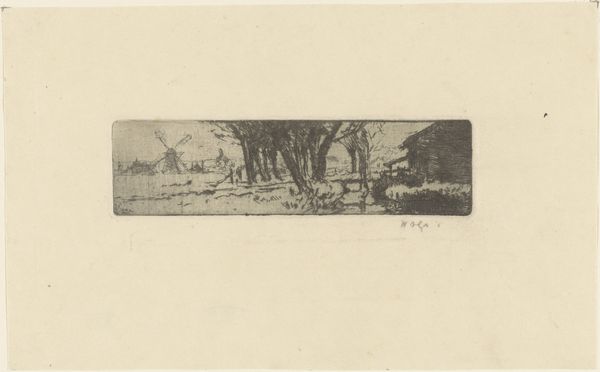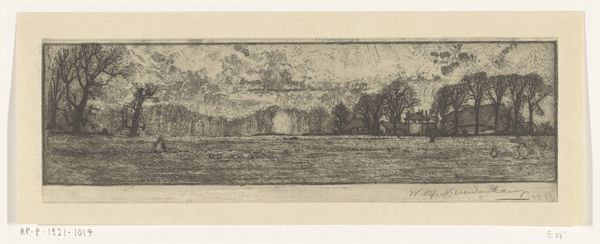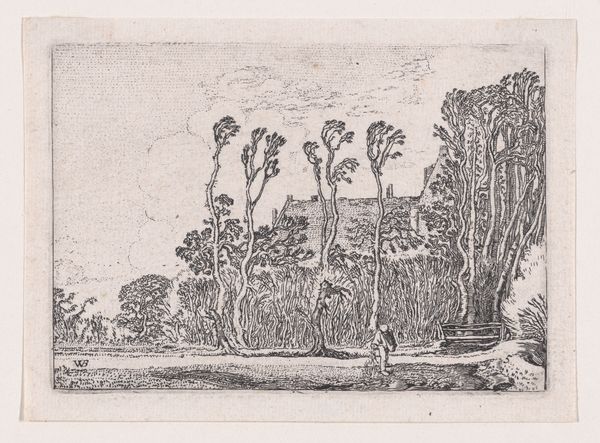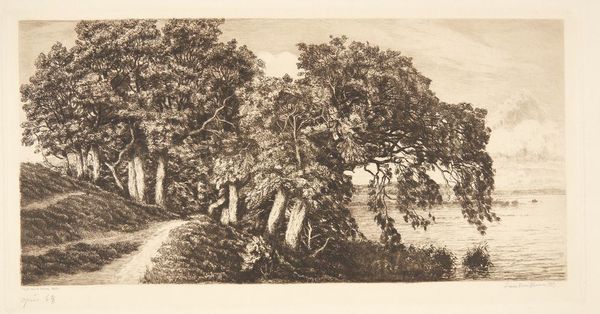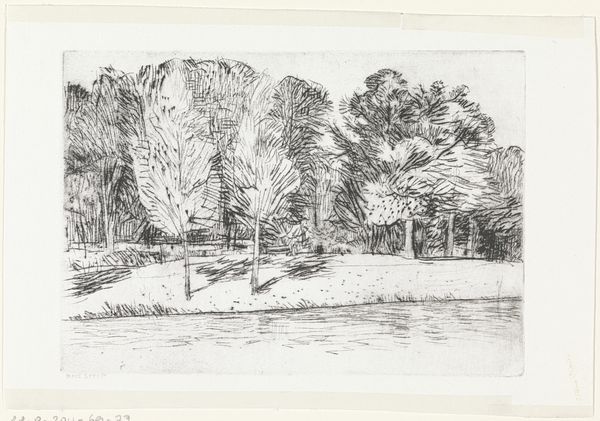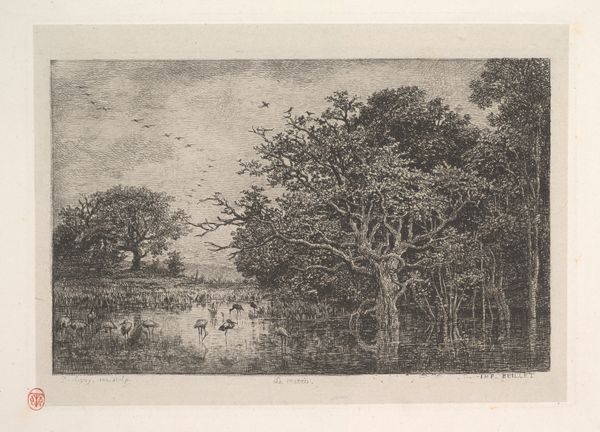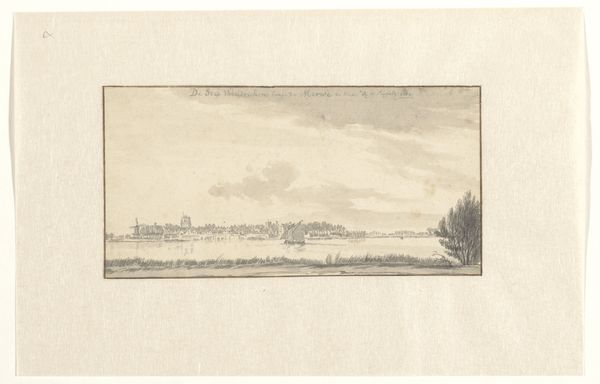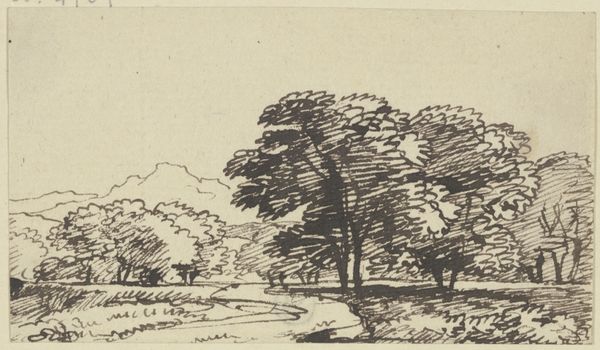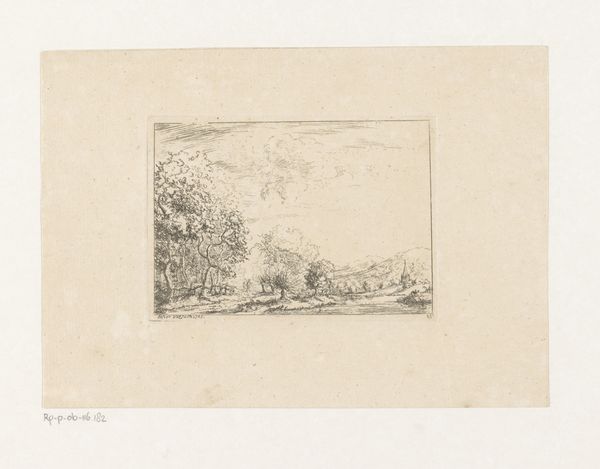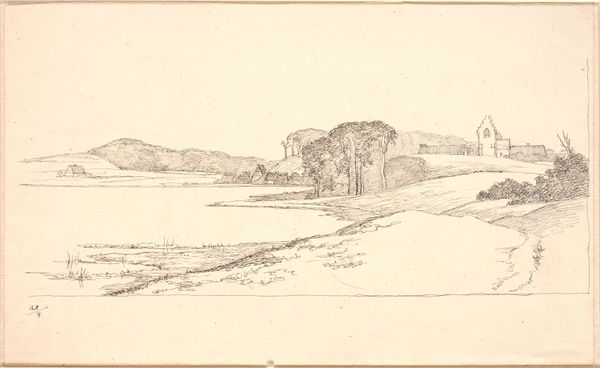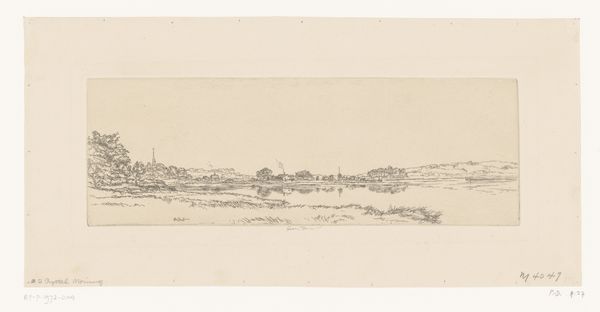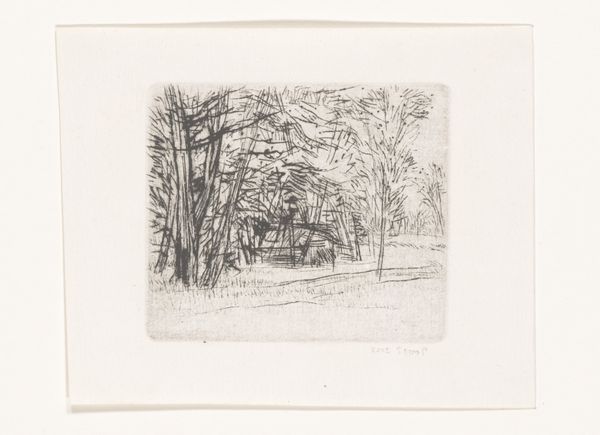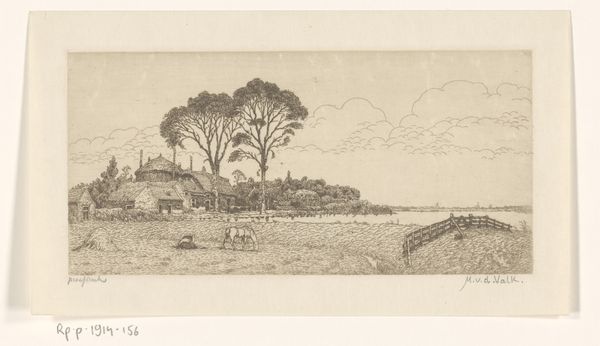
Waringinbomen in de tuin van het paleis van de sultan in Jogyakarta 1898
0:00
0:00
drawing, etching, pencil
#
tree
#
drawing
#
etching
#
asian-art
#
landscape
#
etching
#
charcoal drawing
#
pencil drawing
#
pencil
#
orientalism
Dimensions: height 48 mm, width 278 mm
Copyright: Rijks Museum: Open Domain
Editor: This etching by Wijnand Otto Jan Nieuwenkamp, made around 1898, depicts "Waringinbomen in de tuin van het paleis van de sultan in Jogyakarta," or Waringin trees in the garden of the Sultan's palace. I find it really calming, a serene almost dream-like streetscape. What do you see in this work? Curator: The Waringin tree…it's an anchor to a rich symbolic world, isn't it? Throughout Southeast Asia, it’s considered sacred, often planted near palaces and temples. Notice how Nieuwenkamp renders them – their enormous canopies become these protective, almost womb-like enclosures. Editor: Yes! They do feel sheltering, maybe even looming. Curator: Think about what the tree *represents* -- stability, shade, and shelter for the community. Then, consider that they’re positioned in *front* of the Sultan's palace. What does that imply about the Sultan’s role? About power and protection? About cultural memory? Editor: That’s fascinating! So the artist is using the trees to comment on the Sultan's role in society? Curator: It's more than comment, perhaps. It's a visual language. He uses these ancient symbols, familiar to the local viewer, to reinforce ideas of kingship and responsibility...almost like visually encoding these concepts in a way everyone could understand, literate or not. What feeling does that evoke in *you*? Editor: It makes me think about how even landscapes can carry complex meaning. It's more than just a pretty scene, it tells a story. Curator: Precisely! And recognizing those symbols allows us to unlock narratives that resonate through generations. We’ve both discovered how something as seemingly simple as trees can carry deep emotional, cultural and historical weight.
Comments
No comments
Be the first to comment and join the conversation on the ultimate creative platform.
